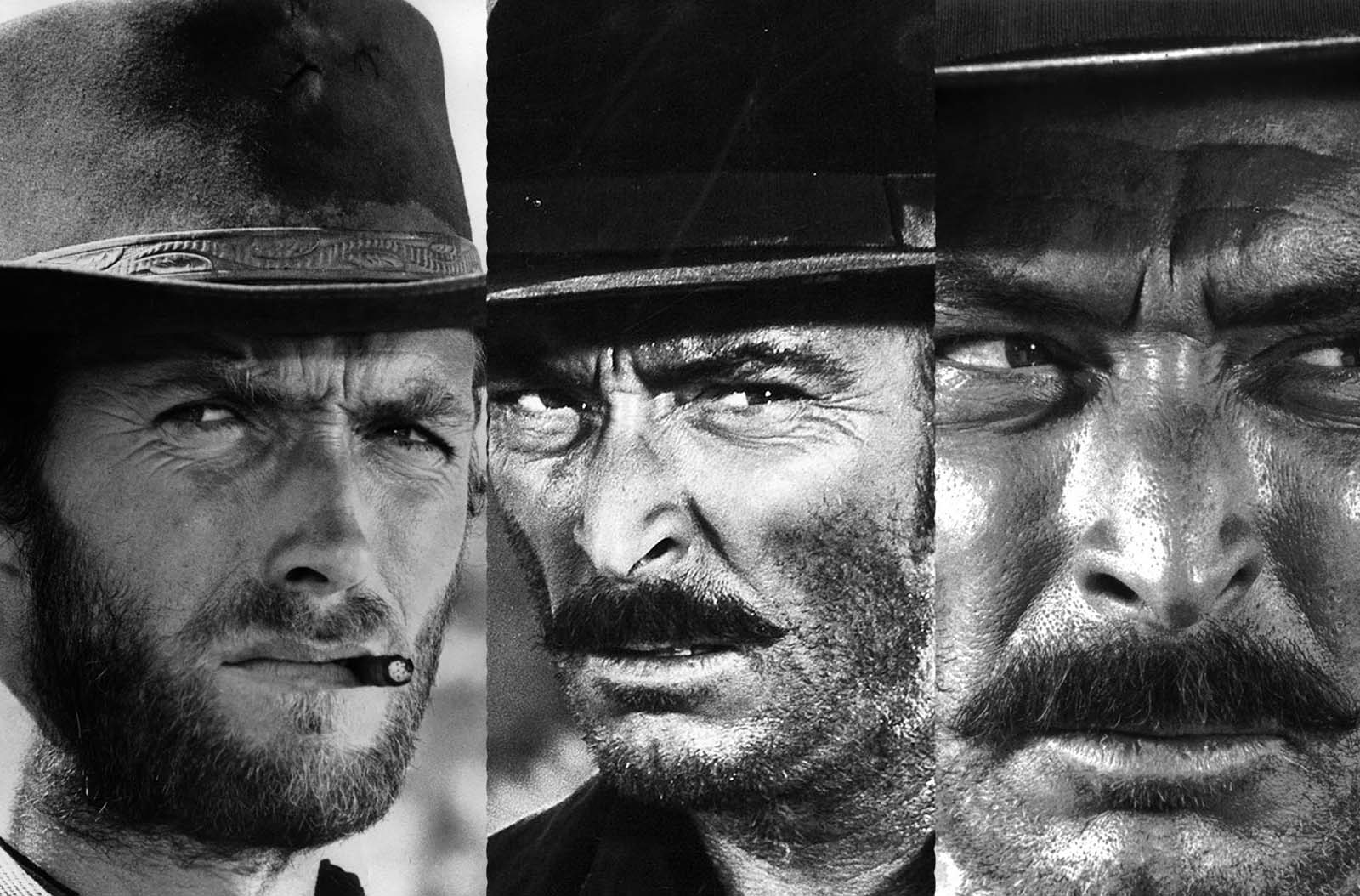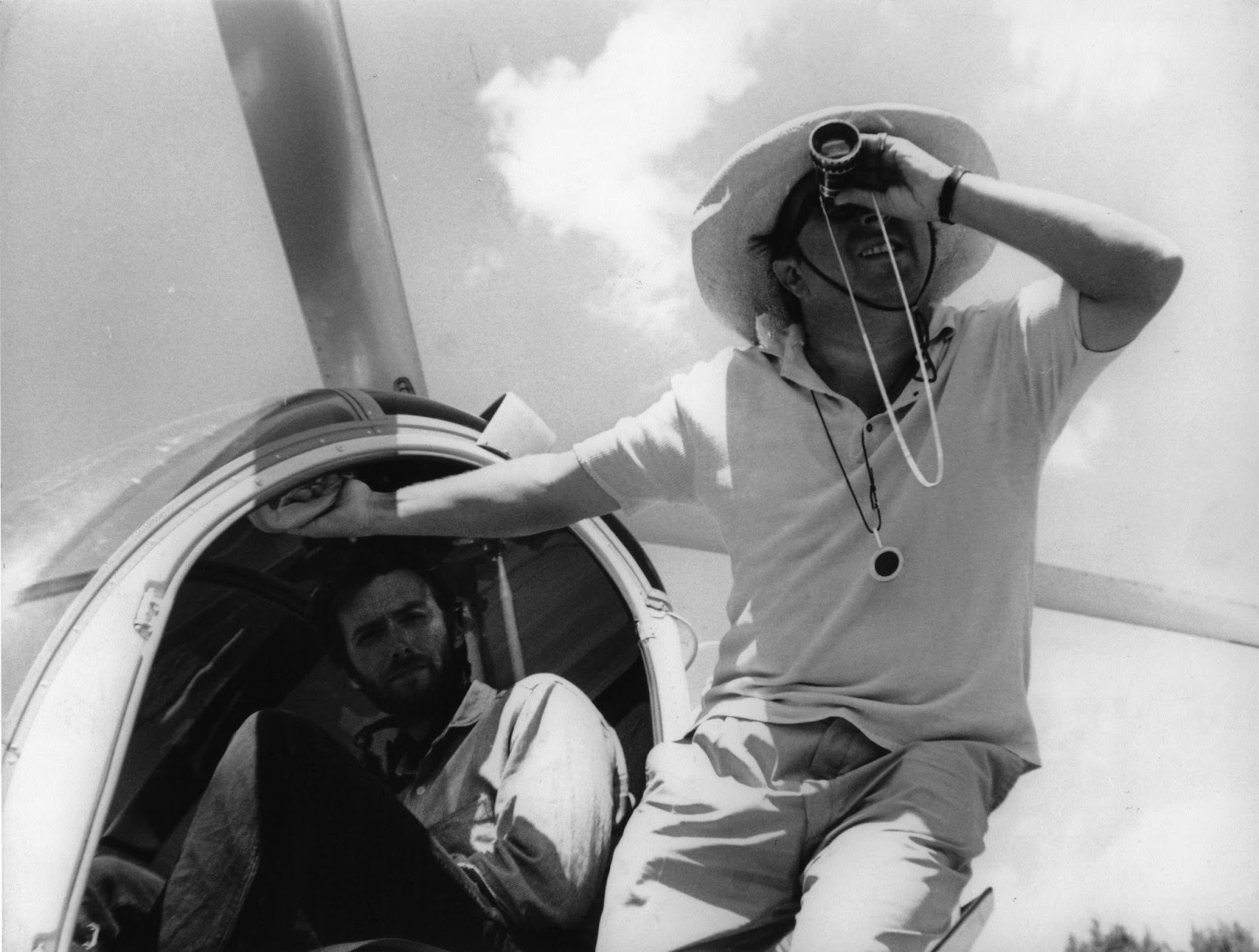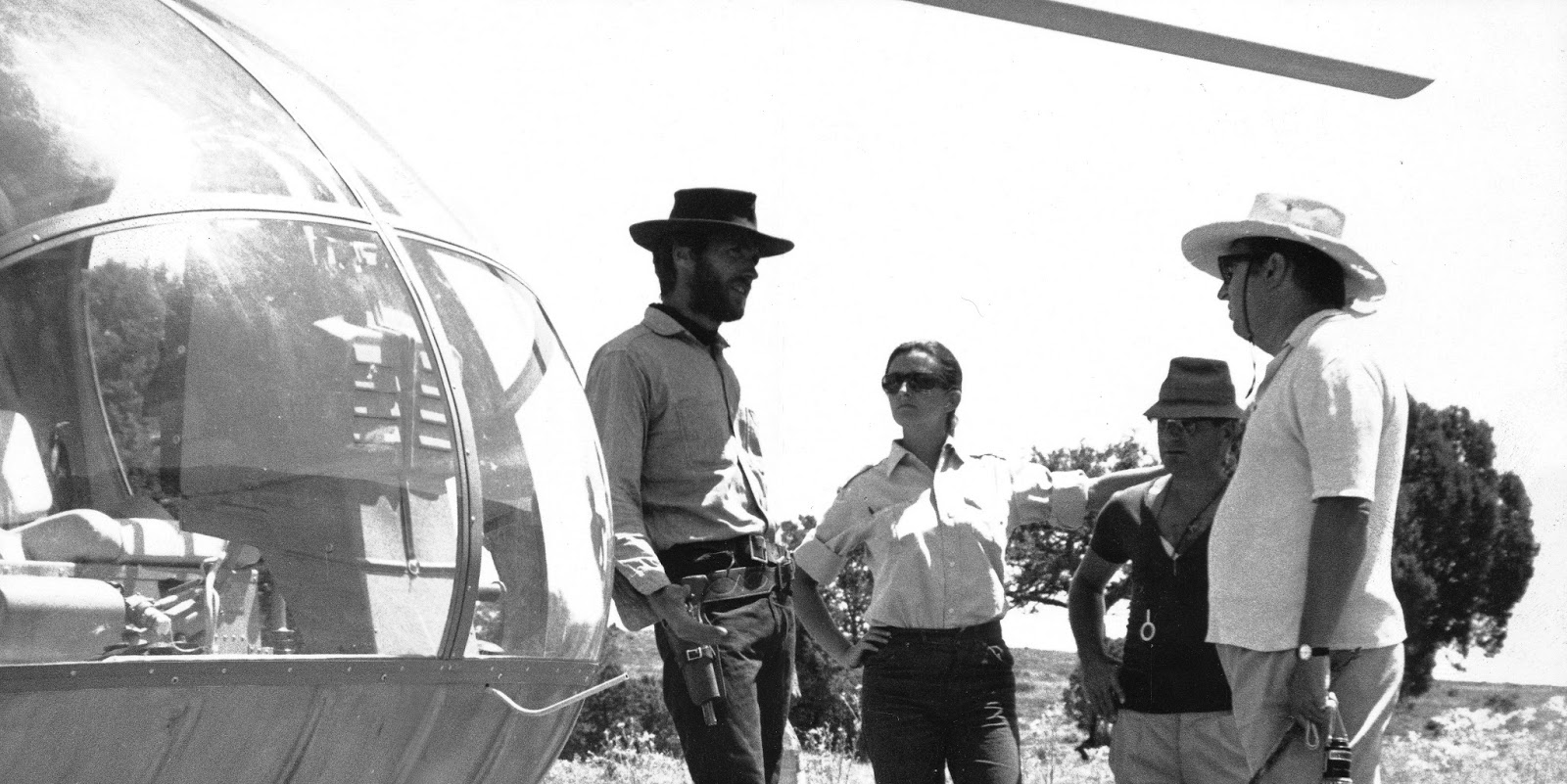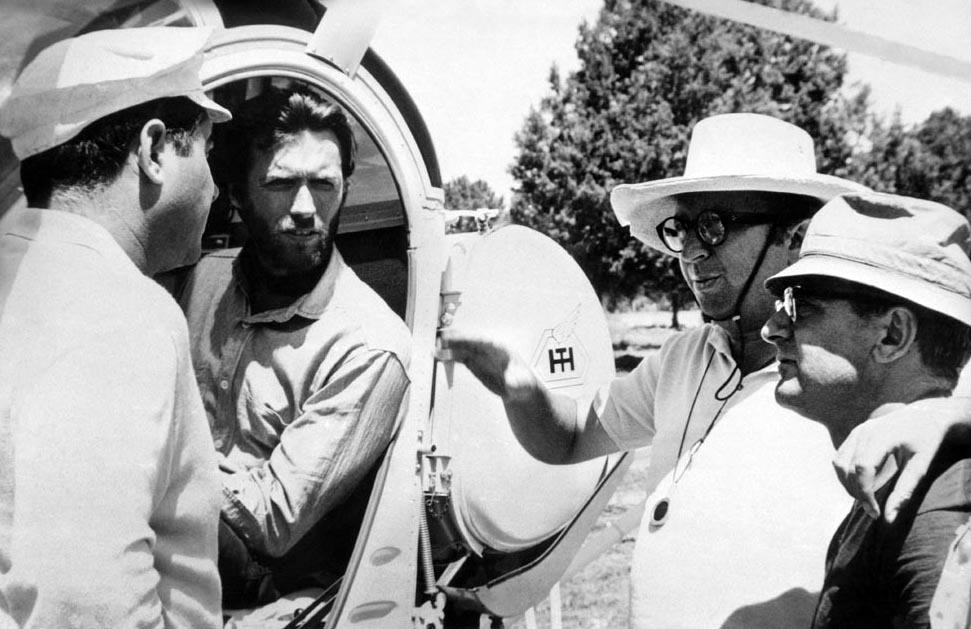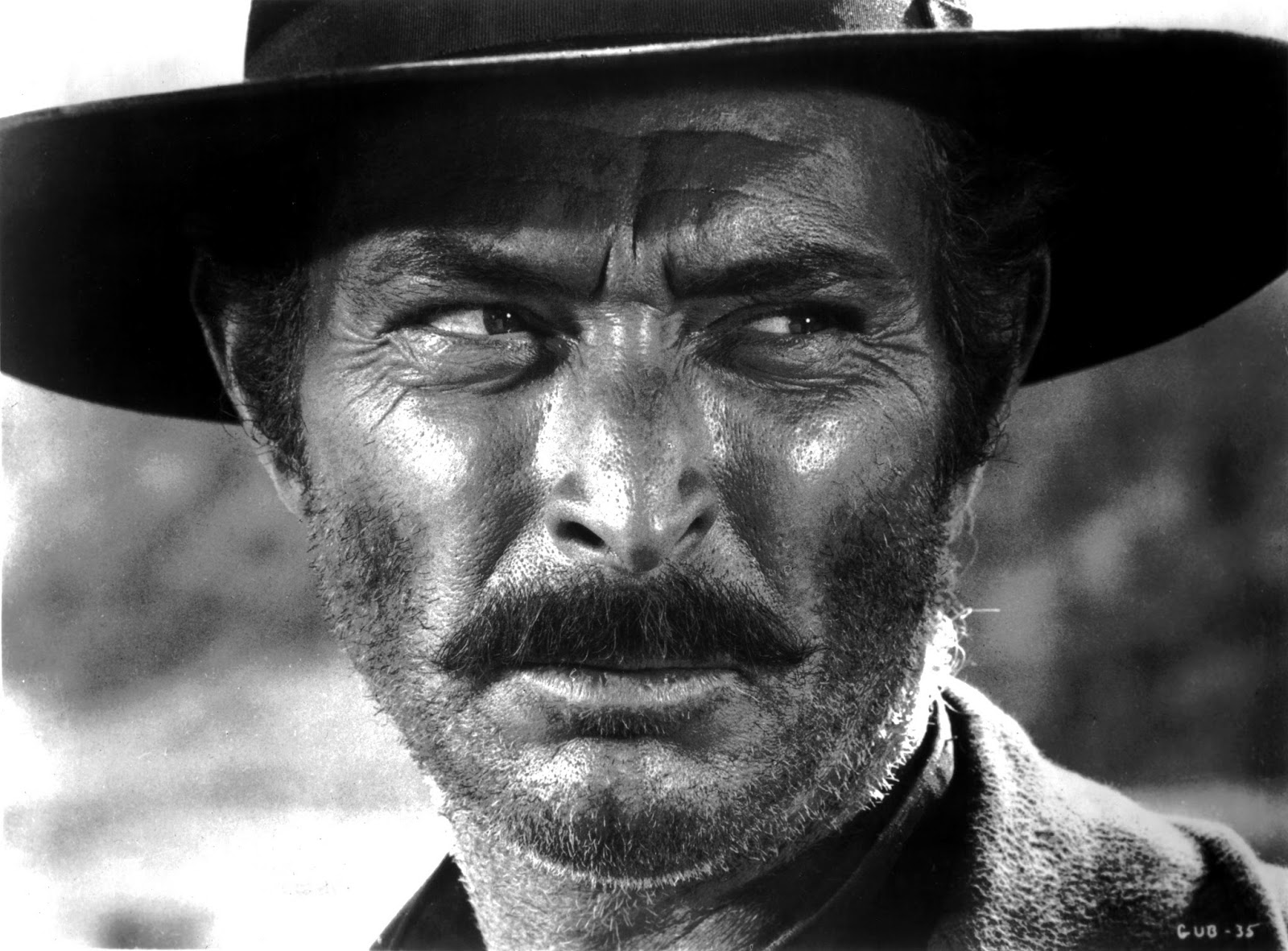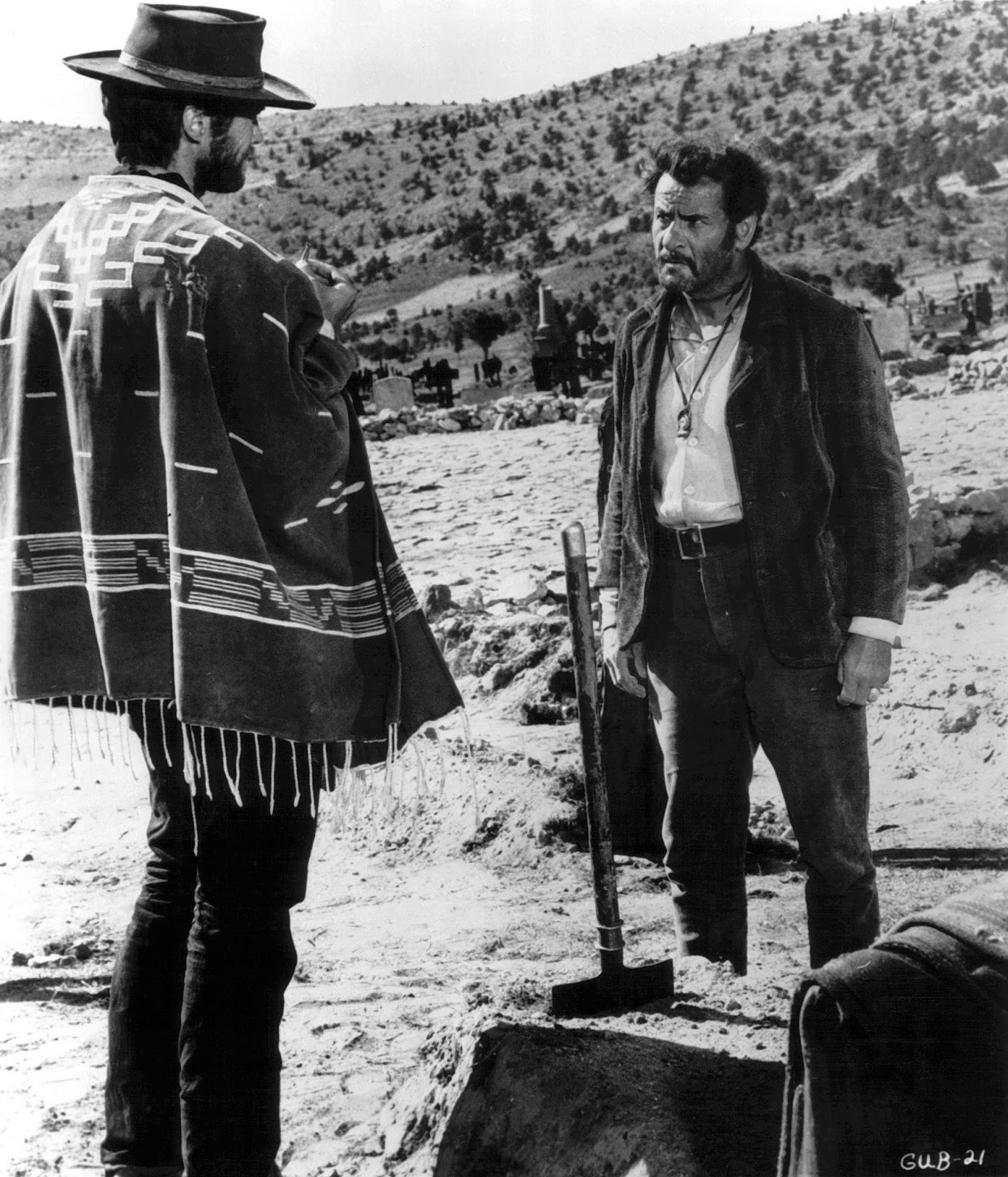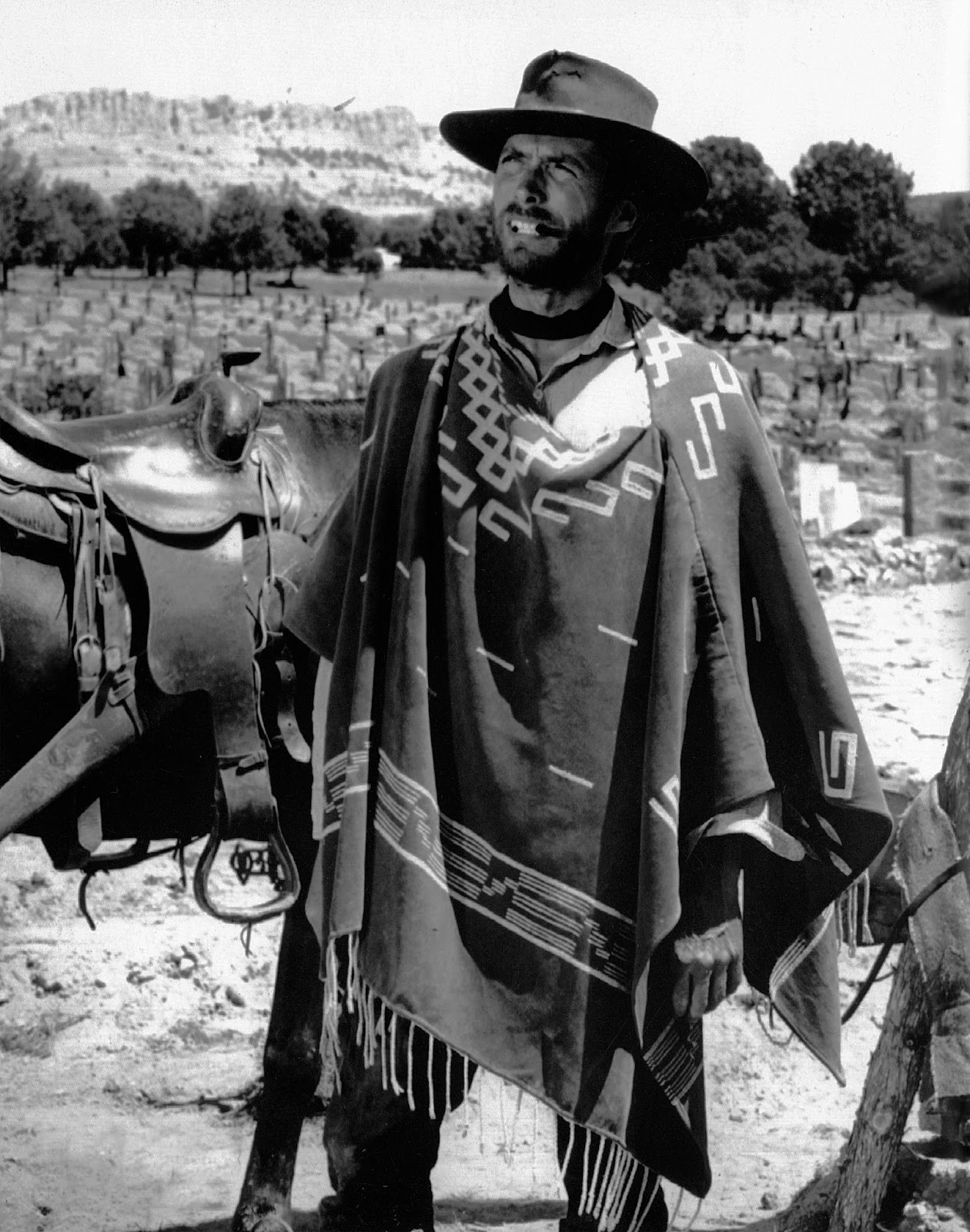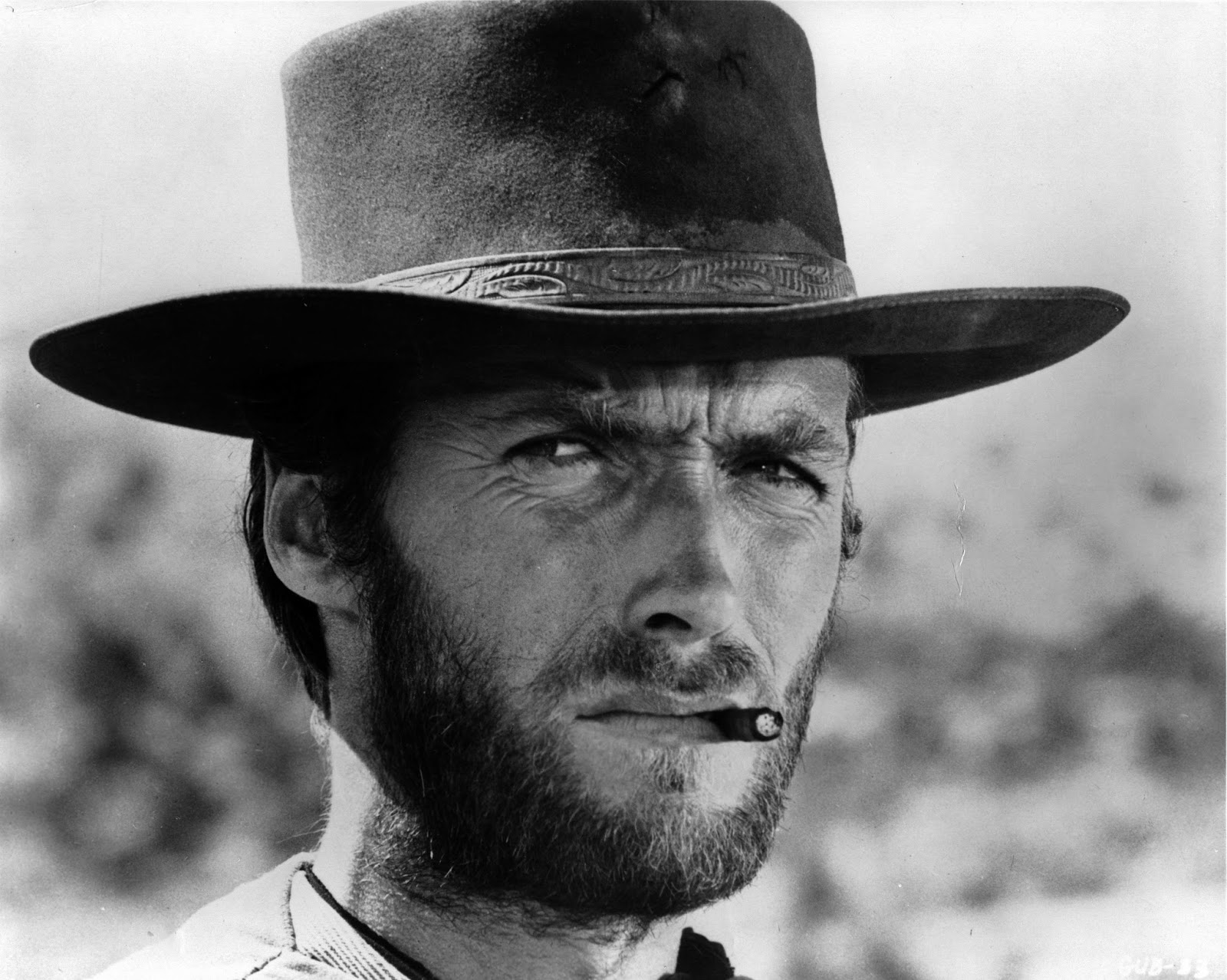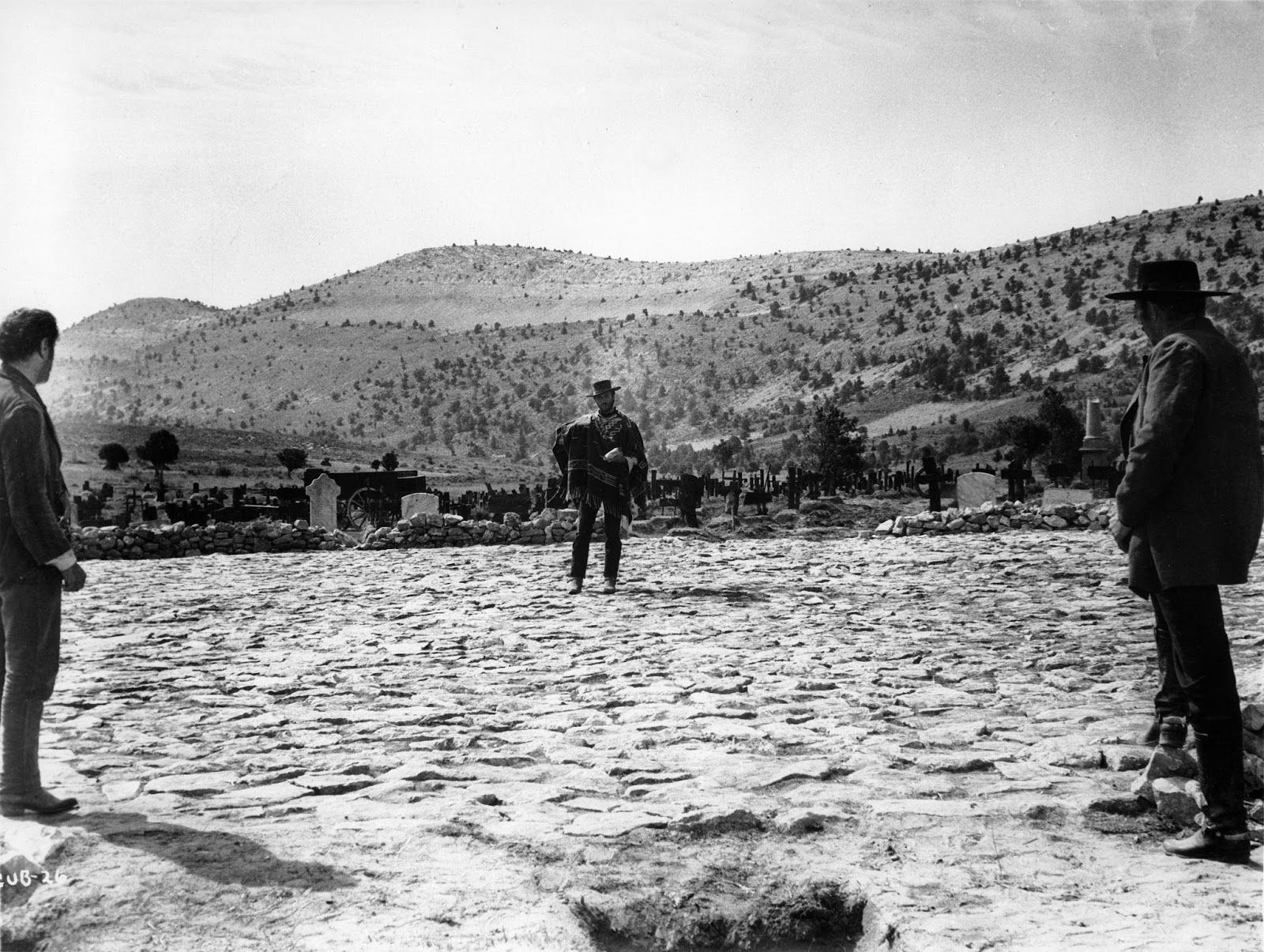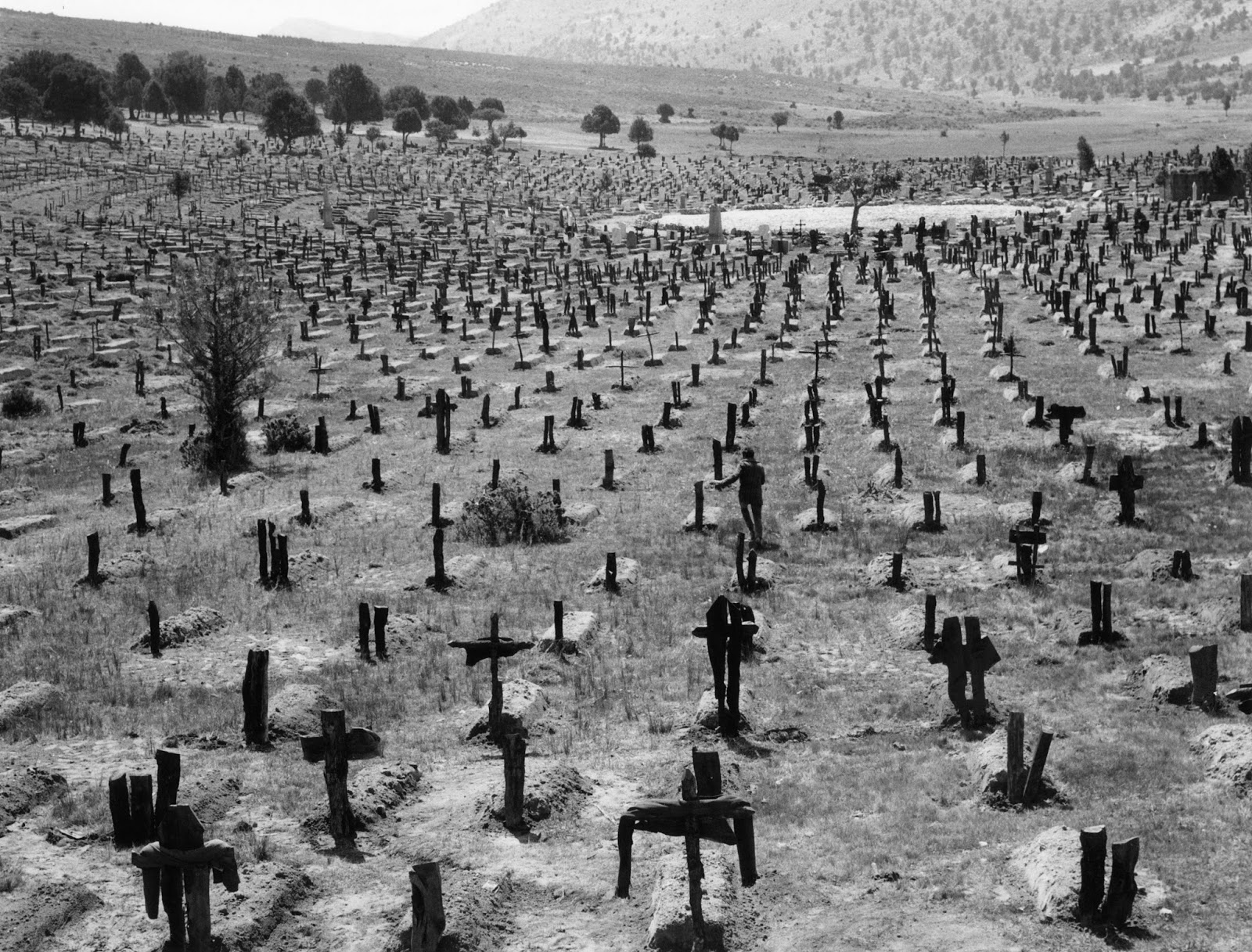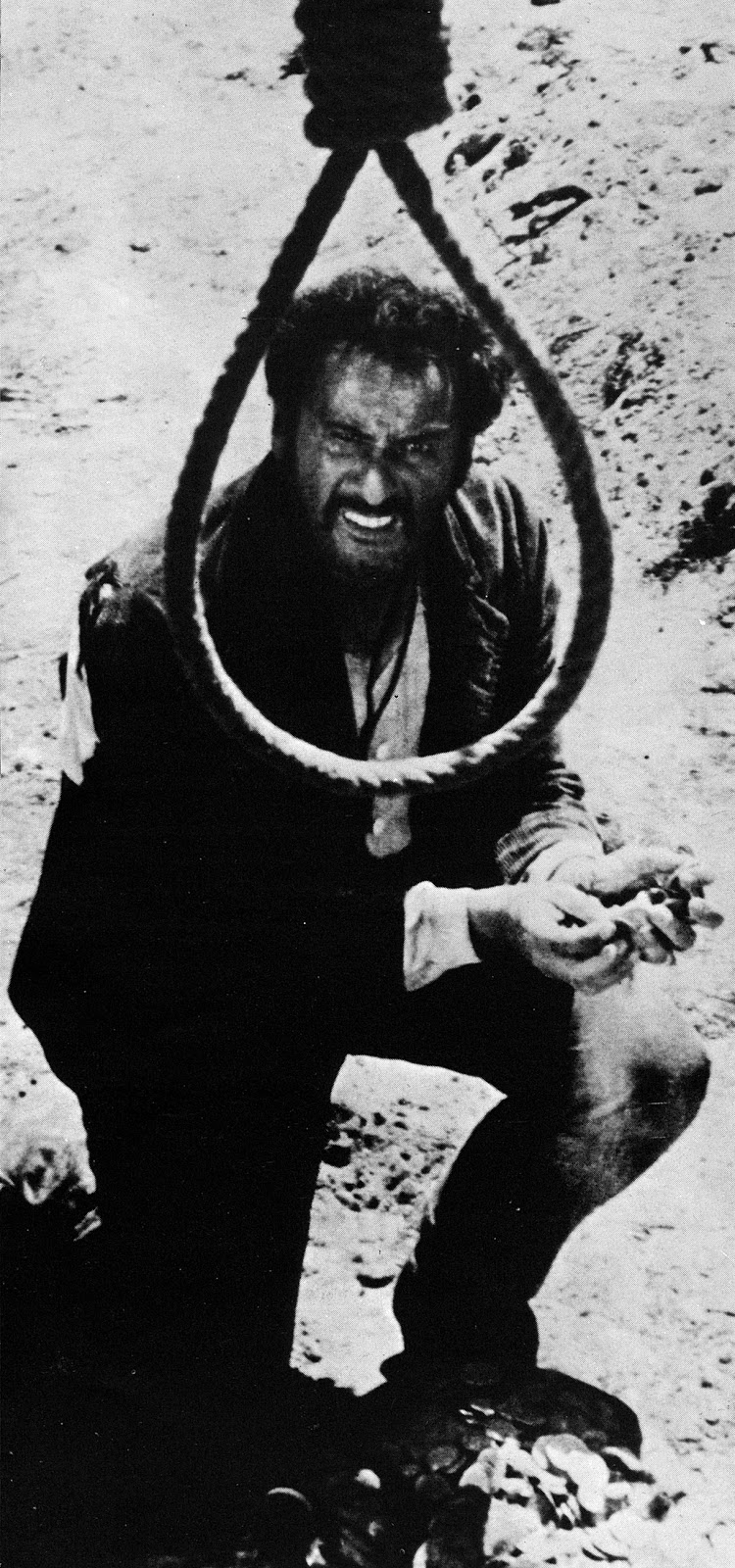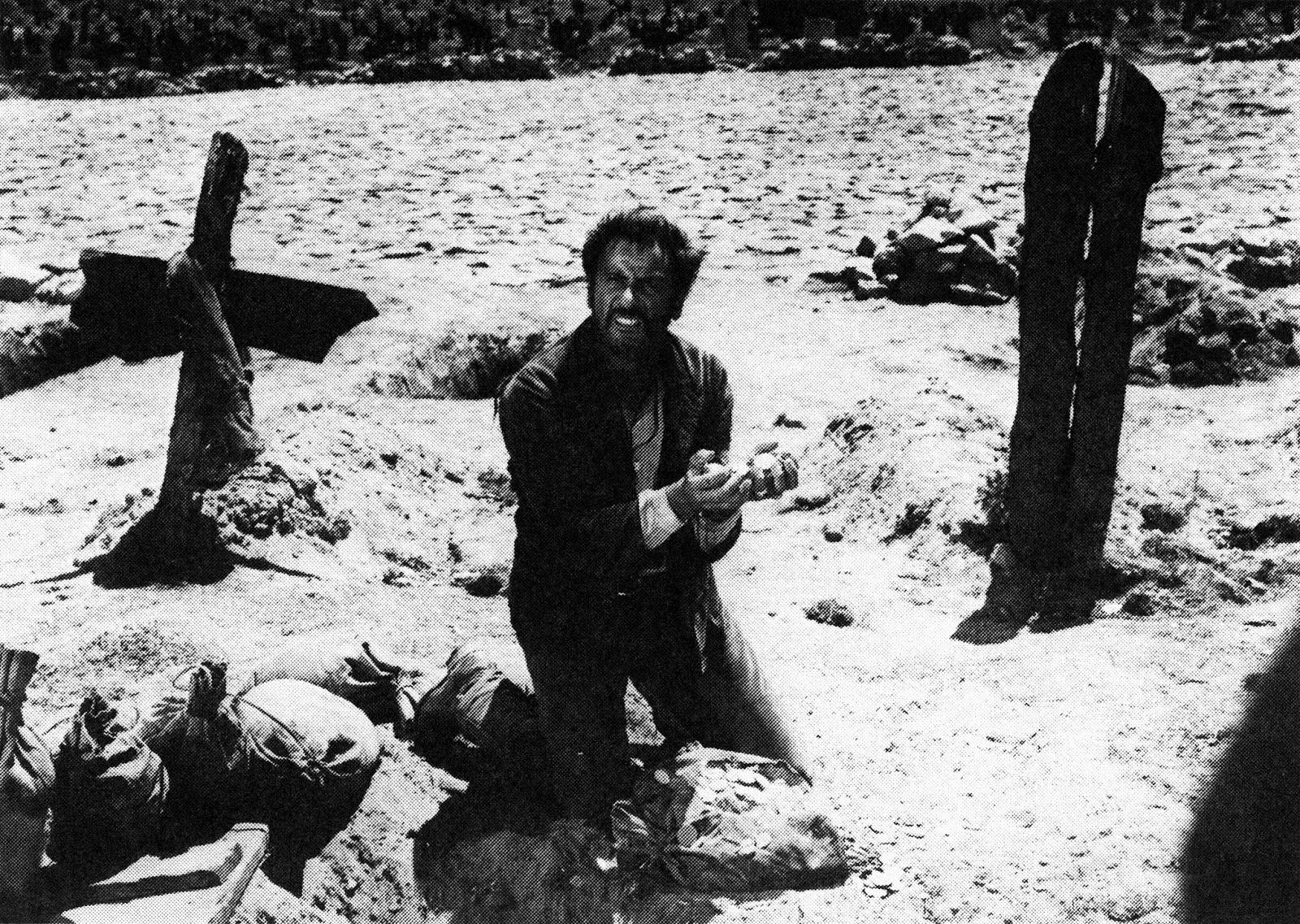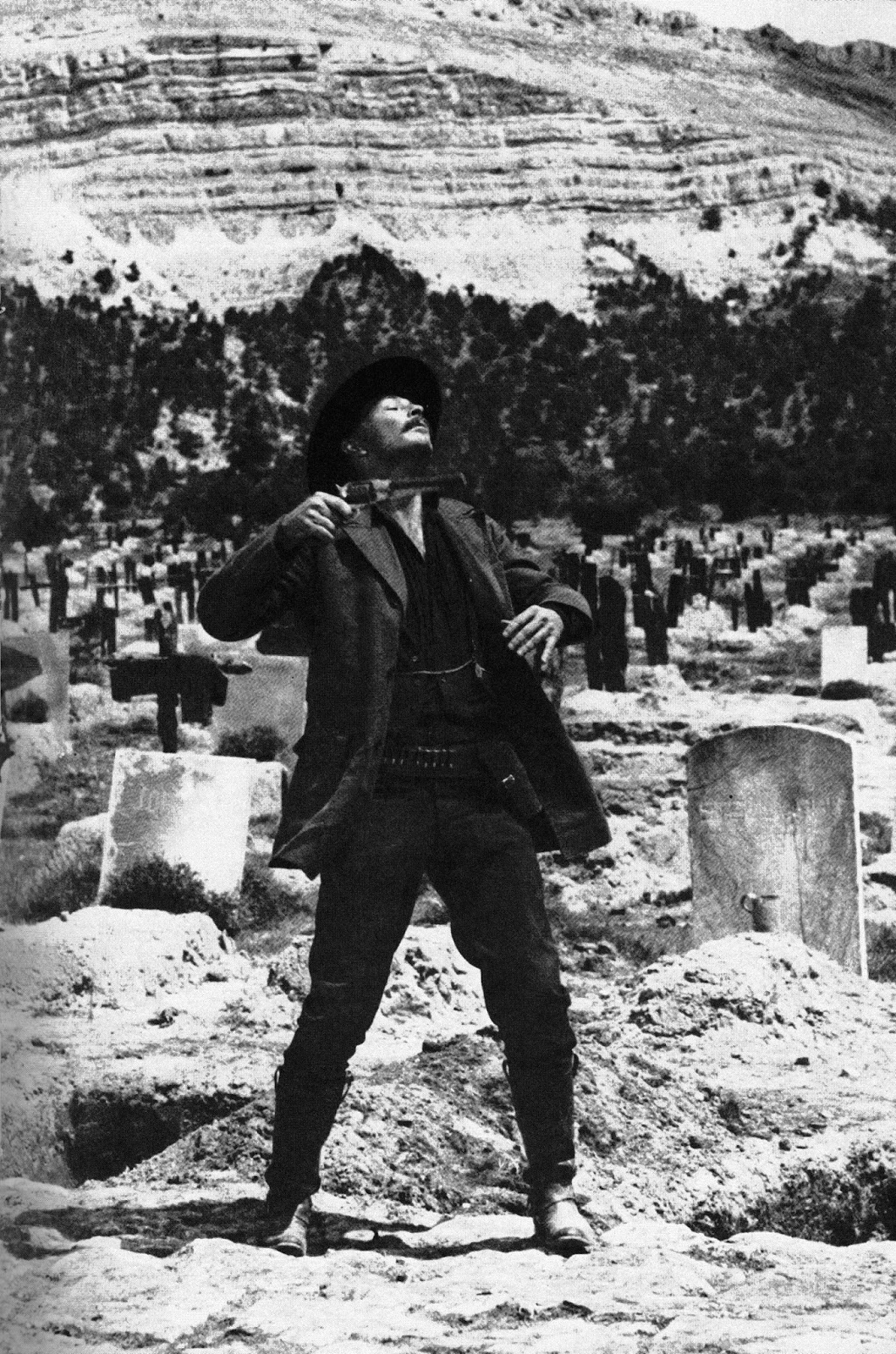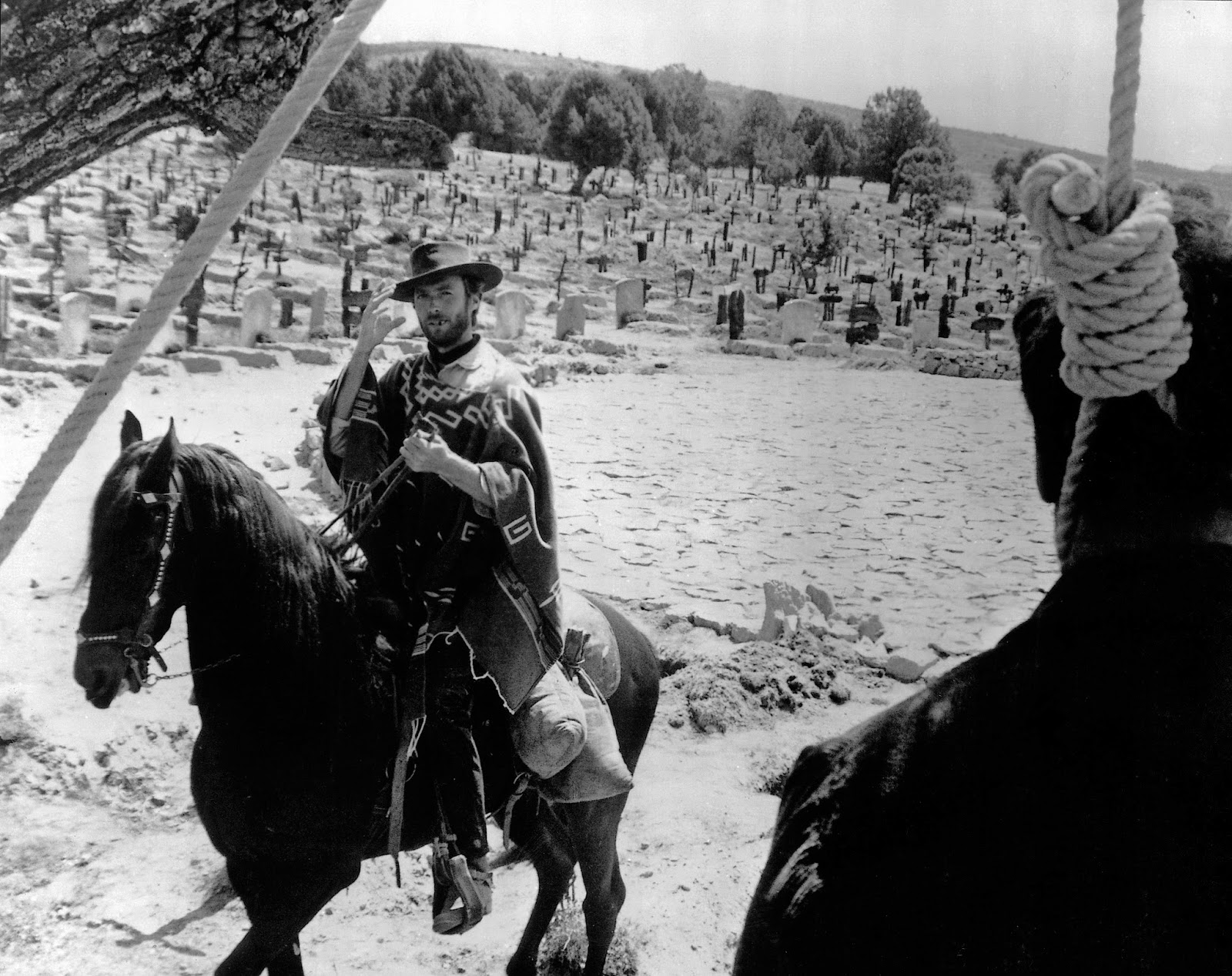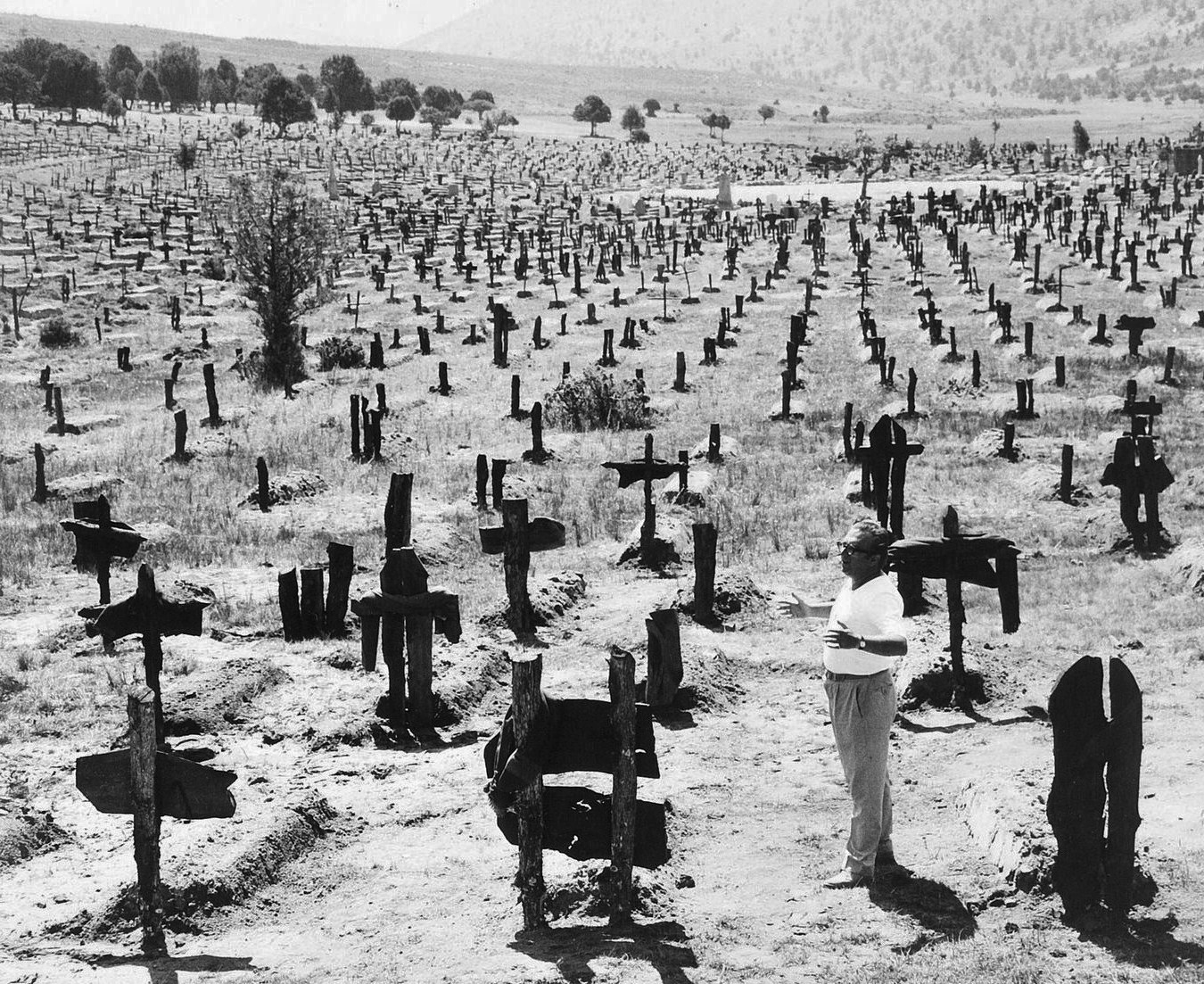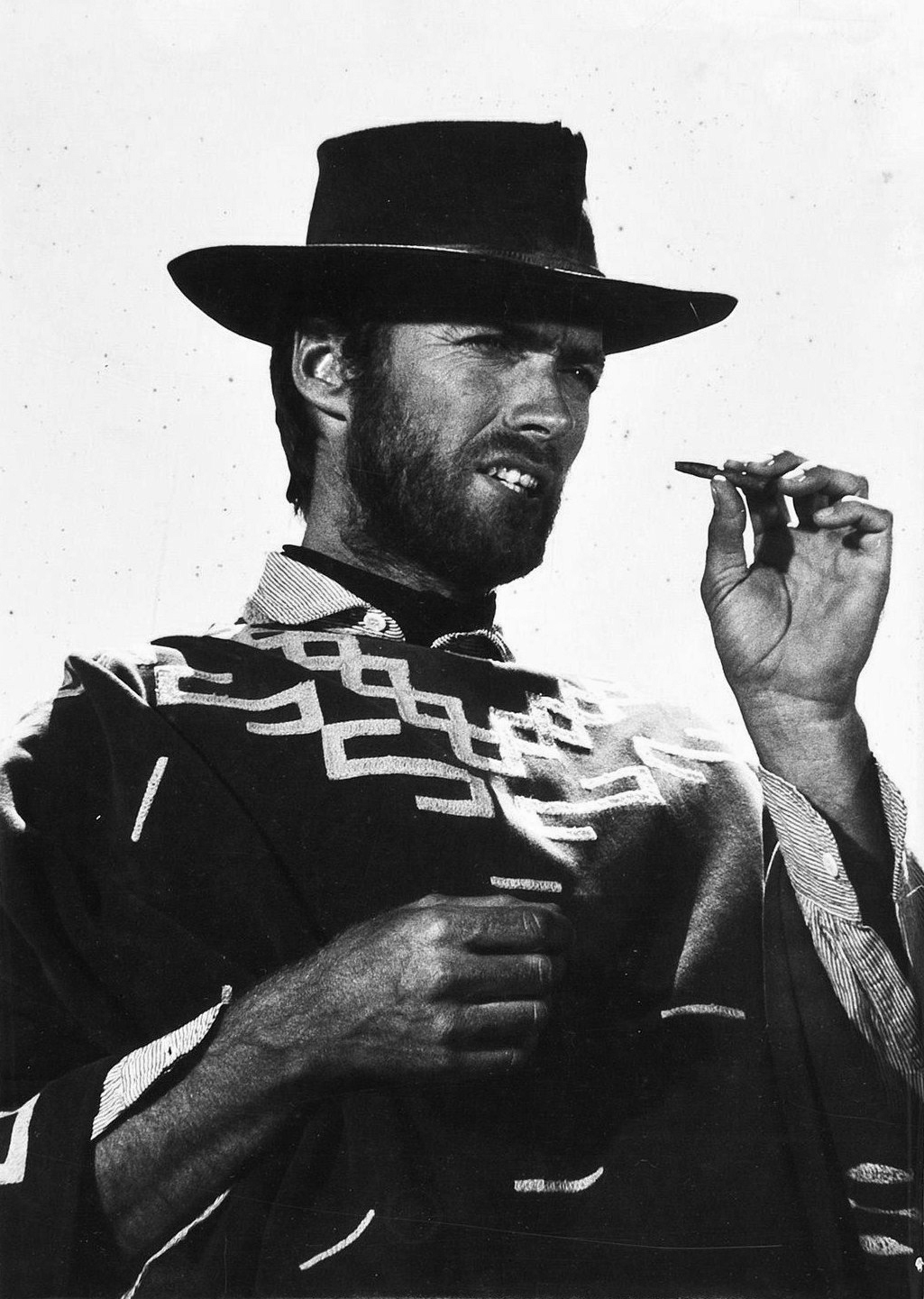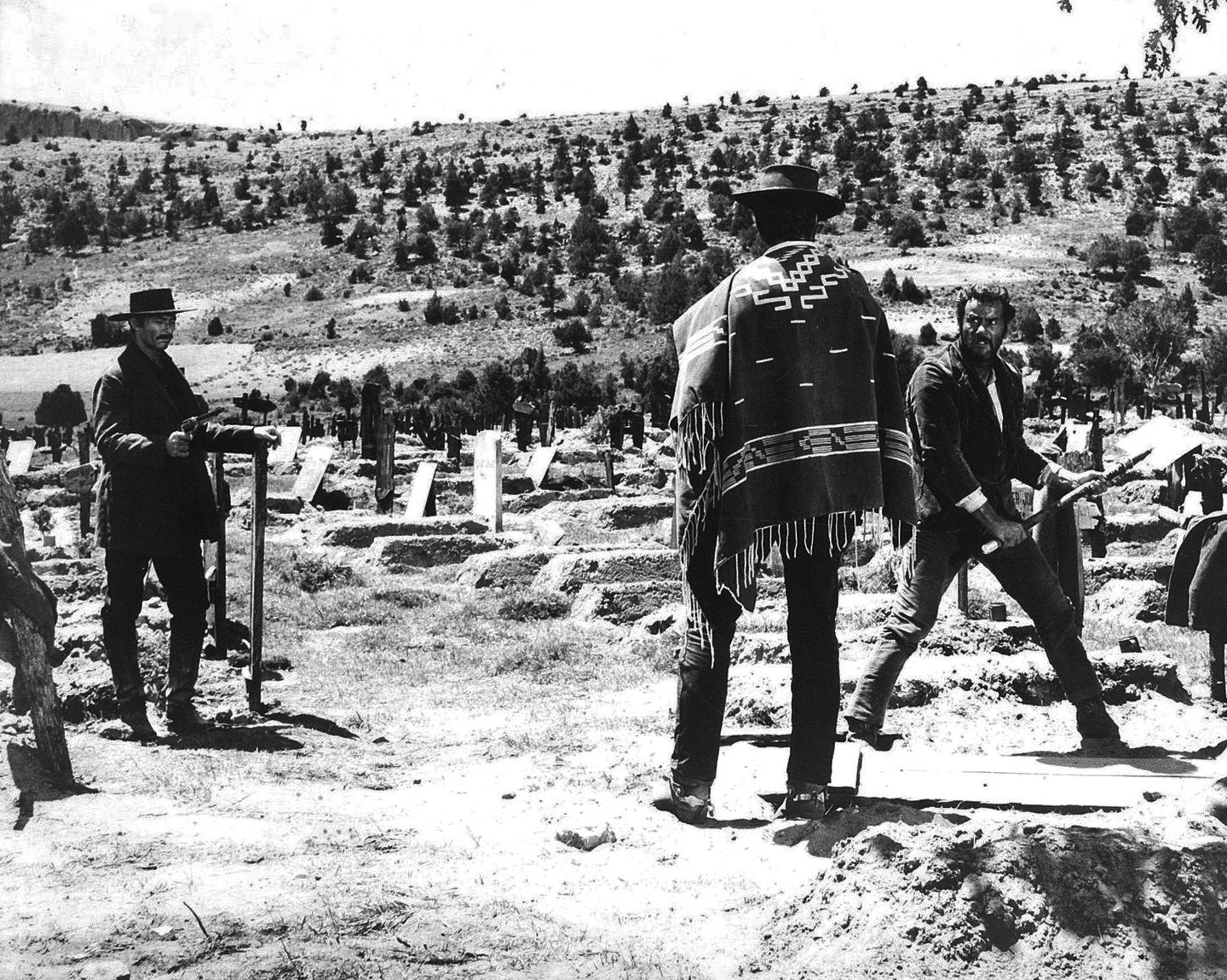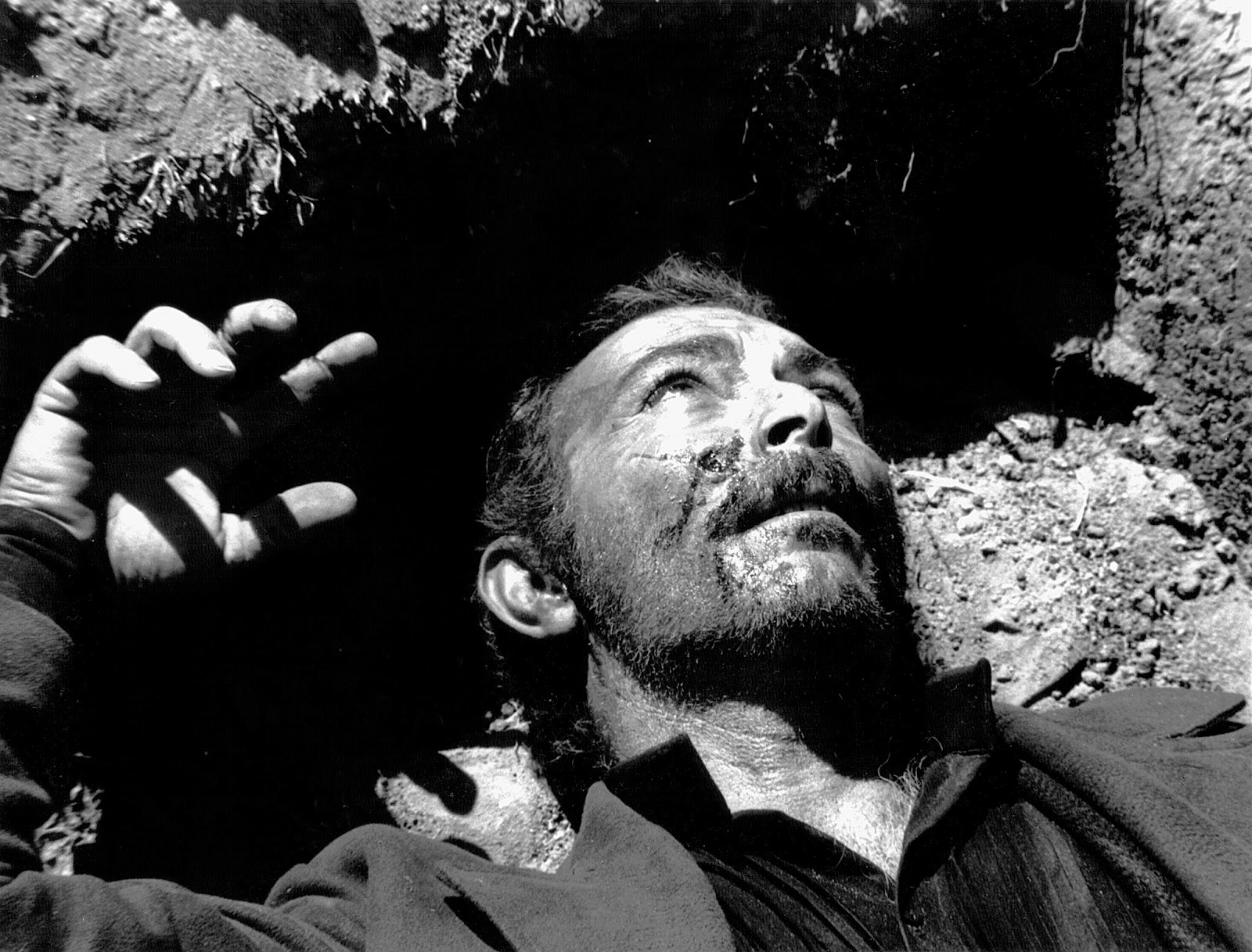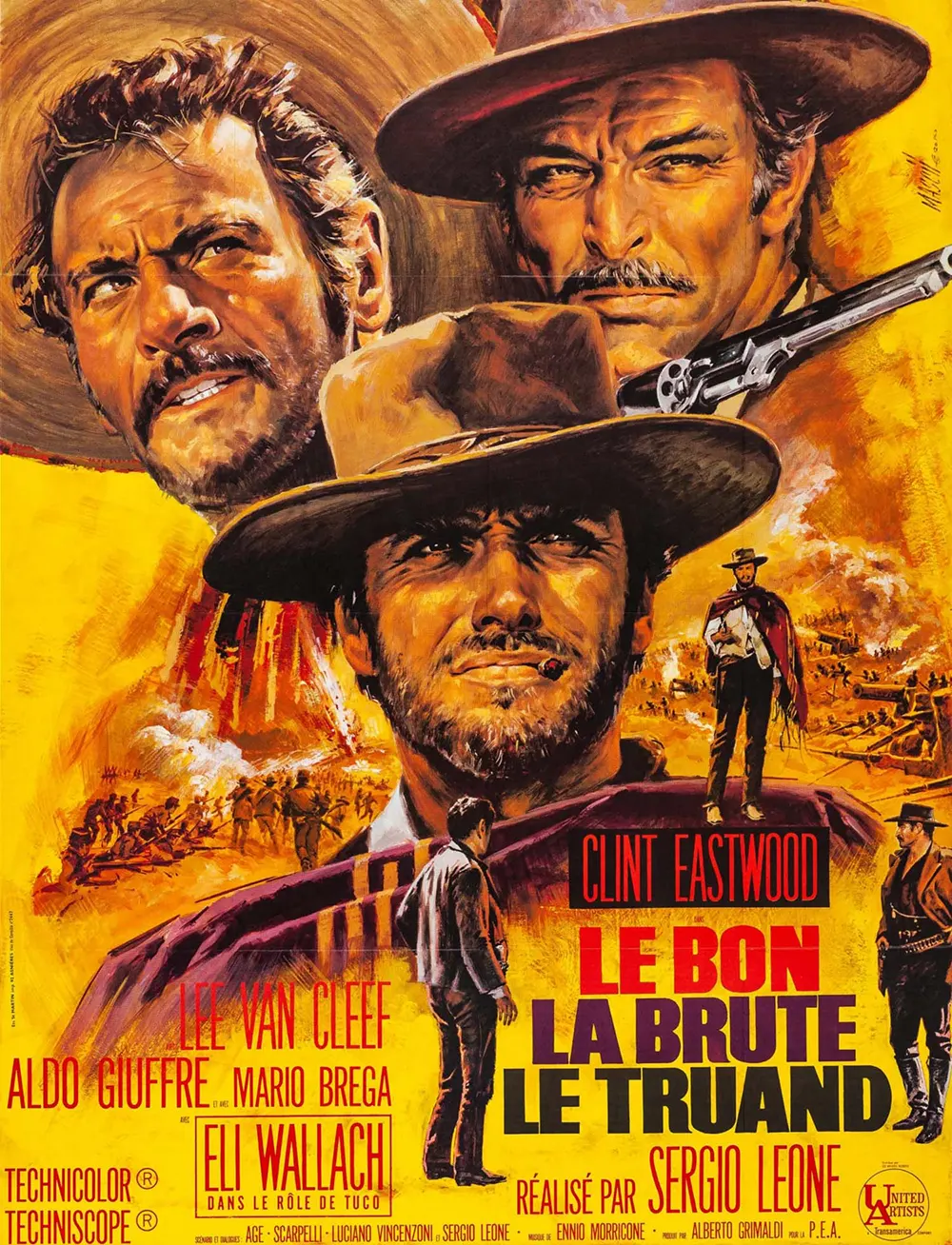The movie is widely regarded as the definitive “spaghetti western.” The film is known for Leone’s use of long shots and close-up cinematography, as well as his distinctive use of violence, tension, and highly stylized gunfights. The plot revolves around three gunslingers competing to find a fortune in a buried cache of Confederate gold amid the violent chaos of the American Civil War (specifically the Battle of Glorieta Pass of the New Mexico Campaign in 1862), while participating in many battles, confrontations, and duels along the way. The Man with No Name, who is nicknamed Blondie, forms an uneasy partnership with Tuco (played by Eli Wallach), a Mexican bandit. The men develop a scheme in which Blondie turns Tuco over to lawmen, collects the bounty, then frees him. However, Blondie eventually double-crosses Tuco and abandons him in the desert. After barely surviving the ordeal, Tuco vows revenge. He eventually catches Blondie and leaves him in the desert without water or food. But before killing his former partner, Tuco learns that Blondie knows the location of a grave where stolen gold has been buried. Out of mutual necessity, the two men join forces to find the fortune. However, they are being pursued by Sentenza, or Angel Eyes (played by Lee Van Cleef), another ruthless bandit who hopes to use them as pawns to lead him to the gold. After overcoming numerous obstacles, Blondie and Tuco find the graveyard where the gold is hidden but must endure one more challenge: a three-way showdown with Sentenza. Blondie ends up killing Sentenza and then places a noose around Tuco’s neck and makes him stand on a grave marker. As he rides off, however, Blondie shoots the rope, and Tuco falls to the ground. Blondie has left behind a portion of the gold, and Tuco is now wealthy but stranded in the middle of nowhere. The Good, the Bad, and the Ugly was marketed as the third and final installment in the Dollars Trilogy, following A Fistful of Dollars and For a Few Dollars More. The film was a financial success, grossing over $38 million at the worldwide box office, and is credited with having catapulted Eastwood into stardom. Due to general disapproval of the spaghetti Western genre at the time, critical reception of the film following its release was mixed, but it gained critical acclaim in later years, becoming known as the “definitive spaghetti Western”. It is listed in Time’s “100 Greatest Movies of the Last Century” as selected by critics Richard Corliss and Richard Schickel. The Good, the Bad and the Ugly has been described as European cinema’s best Western, and Quentin Tarantino has called it “the best directed film of all time” and “the greatest achievement in the history of cinema”. The film’s title has entered the English language as an idiomatic expression. Typically used when describing something thoroughly, the respective phrases refer to upsides, downsides, and the parts that could, or should have been done better, but were not.
(Photo credit: Wikimedia Commons / Britannica / Pinterest). Notify me of new posts by email.
Δ Subscribe
